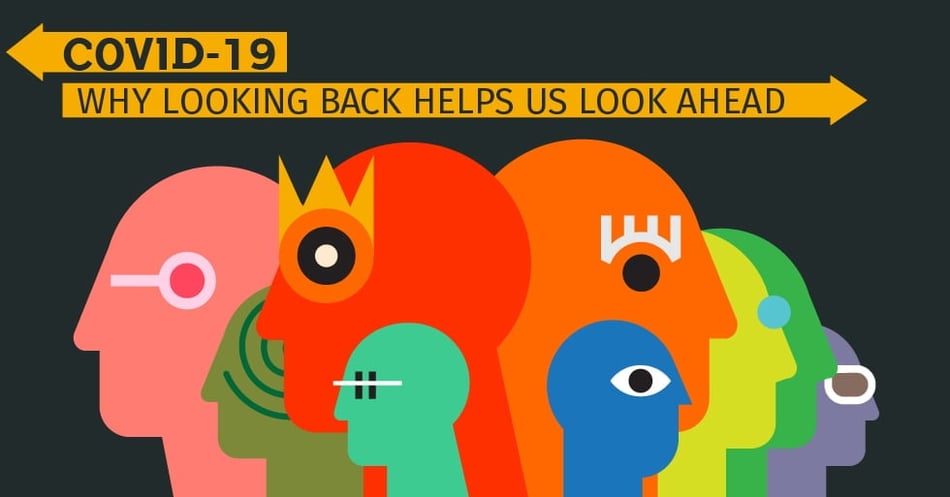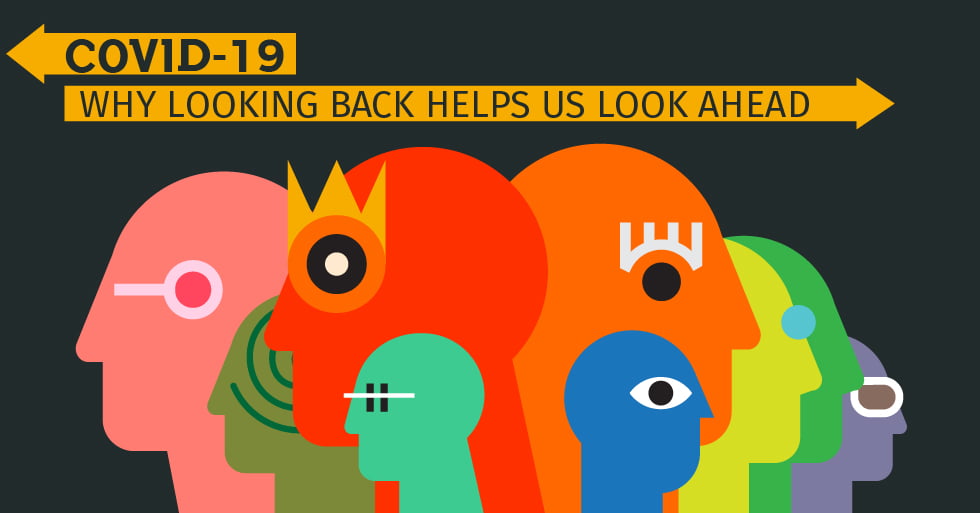COVID-19: Why Looking Back Helps Us Look Ahead

 As states consider timelines for re-opening their communities to work and recreation, we are experiencing an interesting convergence. Just as we are looking ahead to what the data needs to show in order to reopen safely, we are also looking back at the earliest cases to learn more about the disease. Why is it so important to revisit early cases, seek out overlooked cases, and even assign probable cases? In today's post, we'll examine how knowing as much as possible about the past can help us prepare for the future.
As states consider timelines for re-opening their communities to work and recreation, we are experiencing an interesting convergence. Just as we are looking ahead to what the data needs to show in order to reopen safely, we are also looking back at the earliest cases to learn more about the disease. Why is it so important to revisit early cases, seek out overlooked cases, and even assign probable cases? In today's post, we'll examine how knowing as much as possible about the past can help us prepare for the future.
The study of disease transmission - epidemiology - is predicated on investigating events prior to the outbreak. For example, the timeline for COVID-19 does not start with the first reported cases - it backtracks from those cases to the first infections, and hopefully, the source of the pathogen. Even before the first cases were reported in the US, epidemiologists were analyzing data to try to learn as much as possible about how the diseases spread. One of the major discoveries at this time was the long latency period, when the infected patient was not showing symptoms but was still spreading the disease. With this knowledge, state and national decision-makers were able to look ahead and predict what impact the virus could have on the US population, and put social distancing measures in place to prevent uncontrolled spread of the virus. We looked back to plan ahead.
Some may question the idea of going back to mine the data for individuals who may have died without a COVID-19 diagnosis when they were in fact infected. This means numbers of cases and fatalities will be retroactively raised. What is the point of going back and elevating the fatality rate for cases that are in the past, or for "probable" cases? Having an accurate number of fatalities due to the virus gives us a more accurate idea of the mortality of COVID-19, an essential data point when planning for the future. We have to look back to plan ahead.
Another way we look back in order to plan ahead is by trying to get as accurate a number as possible of how many Americans may have had COVID-19 and not known it because they recovered without complications Why is this important? Even though individuals are no longer contagious and were never even gravely ill, having this data gives us a clearer picture of the disease as a whole, how widespread the virus was, and where it spread the most. All this data gives us more information about transmission, but it also gives us an idea of how, as a whole, the population stands with regards to "herd immunity." Exposed and recovered individuals are not only believed to be safe to return to work, since they now have the antibodies to fight off a second infection, they are also barriers to transmission, much like vaccinated individuals are during flu season. We look back to plan ahead.
And when it comes to seasons, planning ahead is key. While summer may bring a respite from the virus in the Northern Hemisphere, the same will not be the case in the Southern Hemisphere, where the virus may continue to spread. It could continue to circulate until the cooler weather returns to the Northern Hemisphere, when it could lead to a resurgence. This means that come fall, a second wave of COVID-19, alongside the seasonal flu, may be awaiting us. By learning all we can about the virus now, we can prepare for this convergence of epidemics.
![EOScu Logo - Dark - Outlined [07182023]-01](https://blog.eoscu.com/hubfs/Eoscu_June2024/Images/EOScu%20Logo%20-%20Dark%20-%20Outlined%20%5B07182023%5D-01.svg)




